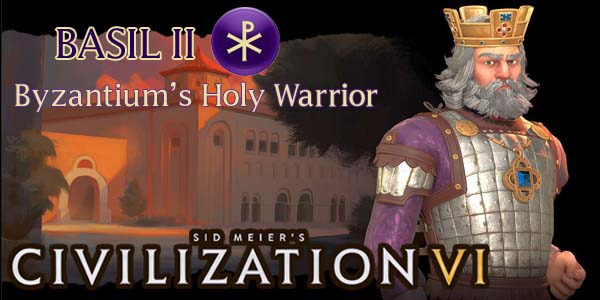
Firaxis has released the final update for its "New Frontiers" DLC Pass for Civilization VI. I have attempted to create guides for each new civilization included in the packs, but there is one civilization that I just didn't have time to cover when it was first released. That civilization was part of the September 2020 update, and it is the Byzantine Empire, lead by Basil II.

It looks like "New Frontiers" represents the end of the Civilization VI life cycle. If that is true, then don't fret. If I get enough demand from my Patrons, I'll also write guides for the "New Frontiers" game modes, or go back and create / update guides for legacy leaders. We also have new games such as Old World and Humankind coming out. I'll be playing both games when they release on Steam, and can also write guides for those games, if my supporters ask for it.
By the third century AD, the Roman Empire had expanded to control much of Asia Minor and the Eastern Mediterranean. The cities in the eastern Greek, Asia Minor, and eastern African provinces tended to be larger and more developed than settlements in the west, owing largely to the Greek and Macadonian empires that had preceeded Rome's occupation of the regions. This made these cities far wealthier than most western cities, and in 330 AD, Emperor Constantine relocated the Roman capital to the city of Byzantium due to its strategic location at the epicenter of trade routes between Europe and Asia, and between the Mediterranean and Black seas. The empire was later split into Western and Eastern administrative partitions, each with its own emperor. When Rome was sacked in 476 and the Western Roman Empire collapsed, the Eastern Empire in Constantinople continued to thrive.
It can be argued, thusly, that the Roman Empire survived until the fall of Constantinople to the Ottoman Turks in the 15th century. However, even though the Byzantine Empire can trace its authority directly to Imperial Rome, and it retained much of the legal and administrative framework inherited from the Roman Empire, eastern culture had begun to diverge from western culture before even the fall of Rome. Most citizens of the Eastern Empire may have considered themselves to be "Roman", but they spoke Greek instead of Latin. The architecture utilized ornate domes and spires as opposed to the austere columns, arches, and triangles of Latin architecture. Religious practices in the east also gradually transitioned away from the dogmatic practices of the Catholic Church until the Schism of 1054 formally established the Eastern Orthodox Church. It is, thus, equally accurate to say that the Byzantine Empire came to represent its own unique culture, independent of the Western Roman Empire.
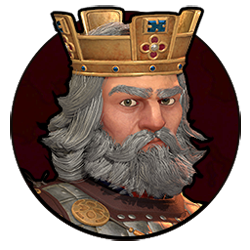
Basil II Porphyrogenitus was a life-long ruler of the Eastern Roman Empire. He was coronated as co-emperor along with his brother when he was just two years old, and ascended to the status of senior emperor at the age of 18, ruling until his death almost 50 years later. For most of his reign, he personally lead his armies into battle against Anatolian rebels, Bulgaria, the Fatimid Caliphate, and the Kingdom of Georgia, securing the empire's borders in both the west and east. Despite being away from Constantinople for so long, he also found time to distinguish himself as an administrator, reforming tax and property laws to protect poor land-owners from exploitation by wealthier elites. He also married off his sister to Vladimir I of Kiev, securing an alliance with the Kievan Rus and converting them to Orthodox Christianity. His reign was so successful, that the Empire prospered for decades after his death, despite his successor emperors being considered largely inept by both contemporary writers and modern historians. Though he is considered a national hero by the Greeks, he is known as "Basil the Murderer" by Bulgarians.
Basil II favors aggressive religious play backed up with a powerful mounted army and navy. He should seek to convert or conquer rival holy cities as soon as possible, then crush or convert his remaining rivals.
[More]
9717627d-e9ed-44d7-b203-9c3945c77bcd|2|5.0
Tags:Sid Meier's Civilization, Civilization VI, Byzantine Empire, Byzantium, Basil II, porphyrognnetos, taxis, hippodrome, tagma, dromon, Divine Guardian, entertainment complex, amenity, cavalry, heavy cavalry, navy, religion, holy city, prophet
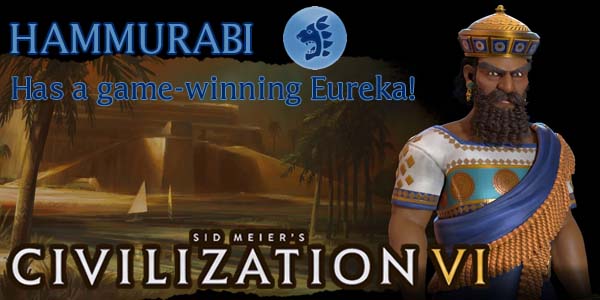
Firaxis will be releasing Civilization VI DLC packs with new game modes, new civilizations, and new leaders through March of 2021. November's update added a very unique leader to the Civilization VI roster: Hammurabi of Babylon. Both the Babylonian civilization and its leader Hammurabi have been playable in multiple past iterations of the Civilization series, but Hammurabi's leader ability is so unique and game-changing that I felt I had to cover it immediately.

For future releases that include multiple leaders or civilizations, I may put up polls on Patreon to let my Patrons decide which civ or leader to cover first (if Firaxis gives enough advance notice). I may also put up polls asking if my Patrons would prefer that I make guides focused on the new game modes. So if you would like to vote on which content you would prefer to see sooner, I hope you'll consider supporting the creation of this content on Patreon.
The city of Babylon is one of the earliest cities ever built, having been settled between the 23 and 19th century B.C.. It was built along banks of the Euphrates River, south of modern-day Bagdad, with steep embankments in order to contain and utilize the river's seasonal floods. It is believed that Babylon was the most populous city in the world during the two heights of the Babylonian empire in 17th century B.C. and 6th century B.C., and it was the first city to reach a population of 200,000.
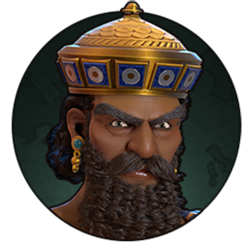
Hammurabi is an ancient Babylonian king who ruled in the 18th century B.C.. He is famous for his Code of Laws that was long believed to be the first set of codified laws ever created. There were, however, earlier codes of laws, but Hammurabi's code differed from earlier codes by establishing the principle of the presumption of innocence for the accused, and that the accuser and accused must both provide evidence to establish guilt or innocence. It also limited the amount of retribution that the victim my inflict upon the guilty by prescribing set penalties for specific crimes. Though many prescribed punishments were brutal (such as disfigurement or execution), the code ensured that the victim of a minor crime would not respond by murdering the criminal. Hammurabi had his law transcribed (in the common language) onto a cylindrical stele and placed at the center of town so that every literate person could read it, presumably so that everyone would know what constitutes a crime and what the punishment for each crime is, so that the administration of justice would be seen as fair to the populace.
DISCLAIMER:
Civilization VI is still a "living game". Strategies for the game (and for specific leaders and civs) may change as Firaxis applies balance patches, introduces new features, or expands the game through further DLC or expansion packs, or as the Civ community discovers new strategies or exploits. As such, the following strategy guide may change from time to time. I will try to keep it up-to-date, and will make notations whenever changes are made. I'll also post links in the official 2K forums and CivFanatics, where I'll also report any changes made. If possible and practical, I will try to retain the original content of the strategy for posterity.
I welcome any feedback or suggestions that readers wish to offer. Feel free to post on the linked forums, or by posting a comment at the bottom of the page.
This guide is up to date as of the release of the "New Frontiers" November 2020 Update (ver. 1.0.8.4)
Babylon is a powerful technological force in Civilization VI, that acquires technologies primarily by completing eurekas. It also gets large food bonuses when settling adjacent to rivers, that allows its cities to grow quickly and grow large, and new districts get a head start in infrastructure. [More]
5f65ce87-0093-404d-b243-d4d037af2ecf|1|5.0
Tags:Sid Meier's Civilization, Civilization VI, Babylon, Hammurabi, enuma anu enlil, ninu ilu sirum, palgum, sabum kibittum, Cradle of Civilization, science, eureka, cavalry, anti-cavalry, water mill, river, fresh water, district, building, envoy
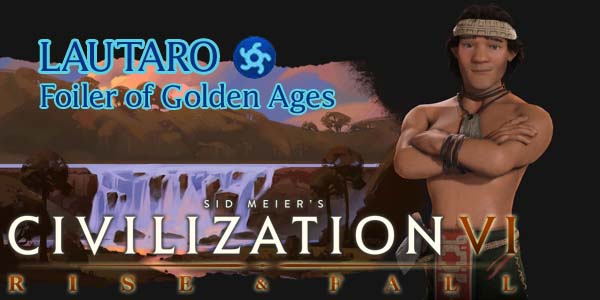
Civilization VI's first expansion, Rise & Fall released earlier this year, and it introduced a few leaders and civilizations that are making their first appearance in the franchise. I hope to be able to write strategies for every one of the expansion civs and leaders, but I'm going to start with the ones that are new to the franchise, and the ones that most utilize the expansion's new features (Era Score, governors, loyalty, and so on). This month, I will be tackling the Mapuche, lead by Lautaro.
The peoples known as the Mapuche are a collection of societies indigenous to southern Chile and Argentina who are linked by social, spiritual, economic, and linguistic heritage. Archaeological evidence shows their culture has existed since around 600 or 500 BC, and their textiles have been traded throughout South America for centuries. Though mostly independent, the various tribes would unite together during times of war (such as against the Inca and Spanish) and elect a "toqui" (meaning "axe-bearer") to act as a military and domestic leader.

One such toqui was Lautaro "Swift Hawk". He was elected toqui while still less than 20 years old, after escaping from the personal captivity of the Spanish general Pedro de Valdivia. He lead numerous successful raids (called "Malón") against the Spanish, eventually capturing Fort Tucapel in December and killing his former captor, de Valdivia, during the Spanish counterattack in December 1553. The Mapuche, under Lautaro's command, may have been able to further expel the Spanish if not for a typhus outbreak and famine that prevented further raids. He was killed four years later in a Spanish ambush, but the Mapuche would continue to resist the Spanish for over a century after Lautaro's death. Lautaro is revered by Chileans (Mapuche and non-Mapuche alike) for his courageous leadership against the Spanish who sought to enslave them, and is even depicted as an almost heroic figure in the Spanish epic poem La Araucana.
Lautaro and the Mapuche can be a potent military force in Civilization VI: Rise & Fall, especially against rival civilizations that ascend to golden ages, or who fall into dark ages.
[More]
a95ca795-d055-4cea-94db-0c1f2aeff1de|0|.0
Tags:Sid Meier's Civilization, Civilization VI, Civilization VI: Rise and Fall, Mapuche, Lautaro, Toqui, Swift Hawk, Spirit of Tucapel, Malon Raider, Chemamull, loyalty, golden age, dark age, culture, appeal, tourism, cavalry, light cavalry, pillage, Chile, unique improvement, unique mounted unit
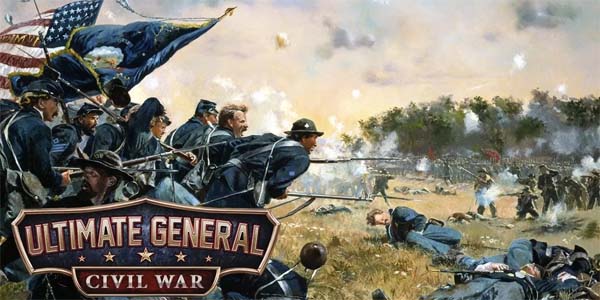

I've asked on numerous occasion for Creative Assembly to build a Total War game based on the American Civil War. I thought for sure that Total War: Shogun 2's second expansion Fall of the Samurai -- with its focus on industrialization, trains, telegraphs, gatling guns, and ironclads -- was setting the series up for a Civil War game. Sadly, that wasn't the case. Creative Assembly decided to move onto Rome II, then to Attila, before diving into all-out fantasy with -- not one, but two -- Total War: Warhammer games!
I've heard that the Total War: Warhammer games are actually pretty awesome, but I have zero interest in Warhammer, so I skipped them entirely. I'll admit that part of that was also because I was a bit bitter that I still hadn't gotten the Total War: Civil War game that I had wanted. Maybe Creative Assembly, being a studio based in the U.K. simply isn't that interested in the American Civil War? Or maybe they felt that Empire's American Revolution campaign already focused enough on the United States?
Addressing Gettysburg
But even though Creative Assembly isn't giving my that game [yet], there's no shortage of Civil War games from other developers. A few years ago, a little indie dev studio called Game Labs released one such game on Steam: Ultimate General: Gettysburg. It was a $15 budget title exclusively about the battle of Gettysburg. Not the entire Civil War, not battles surrounding or related to Gettysburg. Just Gettysburg. The game was praised for its simple UI, its historic details, and realistic, competitive, and highly-customizable A.I..
I played the game very briefly last year, but never actually finished the single battle provided, nor felt that the game was substantive enough (or that I had played enough of it) to warrant a full review. I was fairly impressed with the difficulty and challenge that the game provided, as well as the way in which it presented the actual history of the battle, while still leaving many individual tactical decisions up to the player.
If I had any complaints with that game, it probably only would have been that its narrow scope made it feel a bit overpriced at $15. I had bought it during a sale, so I didn't feel cheated, but I could easily see other people being upset by paying $15 for (basically) a tech demo of a single battle. $10 or less probably would have been the sweet spot.
Well, it turns out that Ultimate General: Gettysburg was basically a tech demo (and a financing plan) for Game Labs' larger, more ambitious project: Ultimate General: Civil War. The new game's scope encompasses the entire Civil War and includes a full campaign. It also sports a cleaner interface that clearly displays your objectives, better controls, and other improvements.
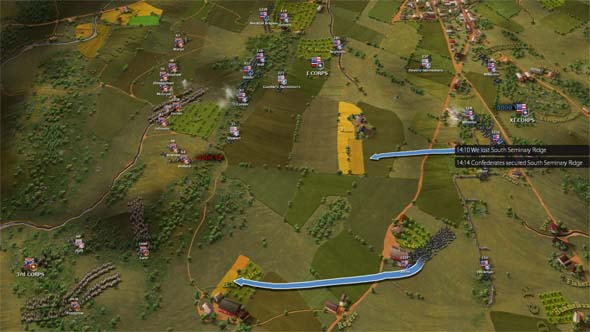
UG: Gettysburg labeled historical points of interest on the map.
When it says, "Fall back to Seminary Ridge", you know exactly where that place is.
Oddly enough, UG: Civil War isn't a strict upgrade from UG: Gettysburg. There's a few features from UG: Gettysburg that have strangely been removed. The original Gettysburg game had some very pretty battlefield artwork that displayed the names of the various locations on the map. Hills, ridges, forests, and even some individual buildings and roads were all labeled with their real-life names! McPherson's Ranch, Culp Hill, Cemetery Ridge, and more are all here. It was an excellent way of providing a sense of place to the player, as well as some historic context. Sadly that feature has been removed from the full Civil War game. I wonder if the developer just didn't have the time or resources to research that level of detail for every battle included. Or maybe it's just because the smaller skirmish sites of battles like Bull Run, Shiloh, and Antietam aren't as infamous as the sites in Gettysburg? Or maybe there were licensing issues with some of the sites, and they decided that if they couldn't include some names, then they'd rather just not include any?

The maps of UG: Gettysburg also had a stylized, polished look to them, the movement arrows were bigger and stood out more (and they stayed on screen to remind you of where the units were headed, and to give the game a textbook-like appearance), elevation and line-of-sight were a bit easier to determine, and so on. This isn't to say that UG: Civil War is a particularly ugly game to look at. If you can get past the simplistic unit sprites, then the game still looks fine. It's just that UG: Gettyburg looked noticeably better!
A House Divided Against Itself...
The campaign of Ultimate General: Civil War will take the player through most of the major battles of the American Civil War. Not just Gettysburg. It also includes some optional smaller skirmishes and situations. In between battles, you'll be tasked with spending money and character prestige to replenish your troops, recruit new and larger regiments, equip your troops with better weapons, and assigning officers to command your corps and divisions. As you win battles, you'll be awarded experience levels that you can spend to upgrade your custom general in several different categories. Upgrading your economy skill will lower the cost of troops and provisions. Increasing your organization skill will increase the size of your army. Increasing your training skill will improve the fighting ability of your regiments. And so on... [More]
de07826a-dae3-41e8-b22b-a5b0f850dc64|0|.0
Tags:Ultimate General, Civil War, Ultimate General: Civil War, Ultimate General: Gettysburg, United States, Union, Confederate States of America, Confederacy, Shiloh, Bull Run, Manassas, Gettysburg, indie gaming, Steam, history, strategy, AI, infantry, cavalry, artillery, skirmisher
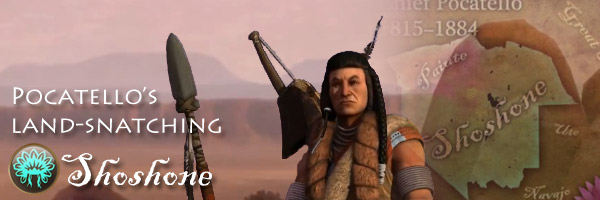
Only a few more civs to go in my series of strategy posts about Brave New World's new civilizations. Next up is the land-snatching Shoshone lead by Chief Pocatello.
The Shoshone are a group of native Americans that originated in the rocky regions of western North America (now Nevada and Utah). Around the same time as European colonists began settling on the east coast, the Shoshone began expanding eastward, which brought them into conflict with other plains indians such as the Blackfoot, Crow, Lakota, Cheyenne, and Arapaho. Some Shoshone who migrated into Texas and Oklahoma would break off into their own tribe: Comanche, who would become expert horsemen. The Shoshone began to come into conflict with the United States in the late nineteenth century due to the U.S.'s westward expansion, leading to a massacre of as many as 500 Shoshone at a winter encampment at Bear River in 1863. Shoshone culture has survived on reservations to this day, and in 2008, began working with Utah and Idaho state leaders to create a memorial to the Bear River Massacre. At its height, the Shoshone nation was composed of many tribes that occupied vast territory, extending from modern-day Montana all the way through Nevada; and their offshoot tribe, the Comanche, exhibited strong control of Texas and Oklahoma.
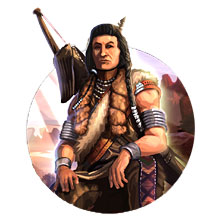
As westward immigration lead to conflict between the Shoshone and United States, Chief Pocatello (or, Tondzaosha) lead his tribe in raids and attacks against settlers in Idaho along the Oregon trail. He was feared and respected by his enemies, and Brigham Young (leader of the Mormons) attempted to offer terms of appeasement to the Shoshone in order to stop the attacks. Instead, the United States army arrived and destroyed any chances of a peaceful solution. Despite the overwhelming might of the U.S. army, Pocatello avoided the total massacre of his people and eventually negotiated the Fort Bridger Treaty of 1868, which granted the Shoshone a permanent reservation at Fort Hall near the Snake River in exchange for annual compensation from the United States (which the United States rarely honored in full). Due to this agreement, the Shoshone cultural identity survives to this day, and the city of Pocatello in Idaho is named in his honor. [More]
b4ea0d42-ce12-454e-8d39-78be32d2a953|8|4.9
Tags:Sid Meier's Civilization, Civilization V: Brave New World, Civilization V, Shoshone, Pocatello, Pathfinder, Comanche, Comanche Rider, Great Expanse, horses, exploration, scout, ancient ruins, native tongue, cavalry, Pride of the Ancestors, goody huts, tile acquisition, Civ-V, unique recon unit, unique mounted unit, unique unit
|

| 12 | | | | | | | 60 | | 11 | | | | | | | 55 | | 10 | | | | | | | 50 | | 09 | | | | | | | 45 | | 08 | | | | | | | 40 | | 07 | | | | | | | 35 | | 06 | | | | | | | 30 | | 05 | | | | | | | 25 | | 04 | | | | | | | 20 | | 03 | | | | | | | 15 | | 02 | | | | | | | 10 | | 01 | | | | | | | 05 |
|